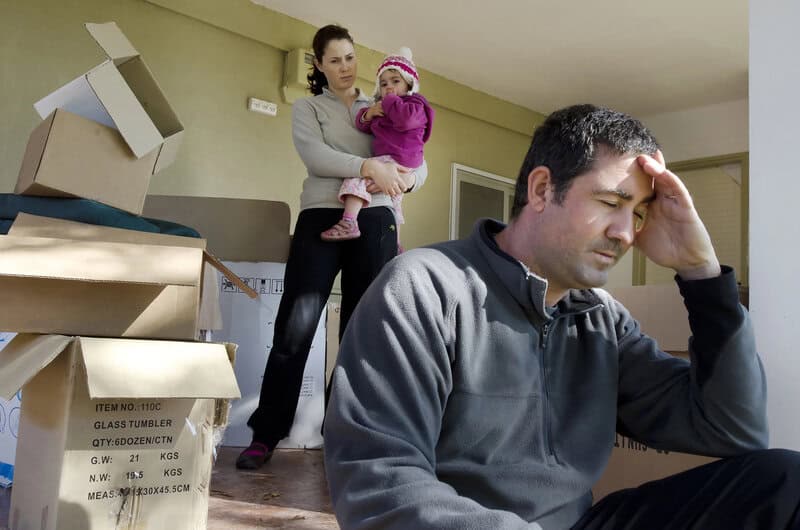 First and foremost, any relocation that takes a child away from their regular school district or outside of a reasonable distance/commute from a co-parent who has child custody or visitation rights is against the law. However, the situation can get sticky if there’s no child custody or visitation agreement in place.
First and foremost, any relocation that takes a child away from their regular school district or outside of a reasonable distance/commute from a co-parent who has child custody or visitation rights is against the law. However, the situation can get sticky if there’s no child custody or visitation agreement in place.
We always recommend seeking support from a family law professional if your ex relocated with the children without permission to determine the best course of action. If the issue cannot be resolved without a judge, it is considered a relocation or move-away case.
CA Courts Support Relocations (Without Permission) If They Don’t Alter Legal Agreements
First, we need to be clear about the type of relocation. Your ex has permission to move whenever and wherever they want without your permission as long as the move does not violate the terms of the child custody and visitation agreement.
While you may be irritated or frustrated by the move or the other parent’s lack of communication, the courts typically won’t have an issue if the move or relocation:
- Is within a reasonable distance (CA considers a distance of 20 miles or more to be “long distance” for co-parenting).
- The children remain in the same schools/district
- The relocation is to a safe, residential structure.
While we never recommended any parent relocating children without notifying the other parent, as long as the terms of the custody/visitation agreement remain intact, it is not illegal. Of course, they must provide you with contact information ASAP, or else it could be construed as absconding with a child (kidnapping).
California family law courts put the children’s well-being and best interests first in child custody cases. If you feel the move puts your child at risk in any way, that it interferes with the current custody/visitation agreement, or is a direct violation of your rights as the legal or physical custodian of your child, contact a lawyer.
Child Relocation Situations Where Courts Get Involved
Here are some of the child relocation situations that warrant some type of legal action on your behalf:
You feel your child is in danger
If, for any reason, you feel your child(ren) is in danger, you can speak to your county court or a local family law professional to help you file a temporary emergency child custody order. The courts expedite the review and hearings for these orders, so you’ll typically have a decision within a few business days.
Consulting with a family lawyer or the free legal assistance provided by your local county court is the best way to determine whether the case warrants it. Keep in mind that if you’re viewed as over-reacting OR if interpersonal issues with your ex-spouse are a driving force for this action (rather than a true threat to a child or custody/visitation), you could be penalized by the court.
They’ve moved the child out of the county, state, or country
It is illegal for a parent to relocate with a child out of the county, state, or country without the other parent’s permission (an exception may be if the move still keeps them within 19 miles of your home and the children can still attend the same schools, extracurricular activities, etc.
Even taking a vacation out of state or country requires written permission from the other parent, so moving children to another state or country without written permission from the other legal or custodial parent. That type of long-distance move, particularly without at least 45 days advance notice, is not viewed favorably by the courts without a proven and extenuating circumstance.
The move negatively impacts your ability to have custody/visitation of your child
Child custody agreements outline two separate types of custody: legal and physical. Depending on the situation, two parents may share legal custody, but one may have primary or majority physical custody of the child. In California, parents often share 50/50 legal and physical custody of their child.
This agreement is legally binding. However, the courts also recognize that it’s a living document and that things change yearly as your children grow up. Changes to the agreement can be made without a new legal document, but they are best done in writing to create a verifiable paper trail.
If your ex-spouse moved more than 20 miles away, the distance affects how often you can physically see or visit your child within the current custody/visitation agreement. The move may also take your child out of their current school district. In either case, your ex shouldn’t have moved without communicating with you and creating a new child custody agreement that reflects reasonable changes based on where/how far away they moved.
It negatively impacts your child (or not)
The older your child is, the more the child custody or visitation agreement may need to evolve with the child’s needs and preferences. The court can prevent a move (or grant sole physical custody to the non-relocated parent) if they feel the move is not in the child’s best interest or negatively impacts their well-being. (Cal. Fam. Code § 7501(a) (2023).
That said, if your child is old enough to speak about their preferences and give substantial support for their feelings, and they prefer the move, this could impact your case. Courts are more apt to listen to older children (10+) or may also ask for information from a qualified, reputable family therapist to help determine what’s best.
Sometimes, a child wants to change schools or districts because the new one is better for their social, academic, or extracurricular life. The court may consider this. That said, the court frowns upon anyone who moves a child without providing at least 45 days’ notice to the other parent, especially if that move impacts the current custody/visitation agreement.
You are notorious for speaking ill of the other spouse or initiating negative drama
Studies are very clear that children with divorced parents fare best when their parents both practice healthy co-parenting and communication (leaving their interpersonal affairs out of the children’s awareness to the best of their ability).
The courts do not support this either. On their page about relocating with a child, the CA family law court is clear the relationship between co-parents can play a role in a judge’s decision:
A judge can consider the co-parenting relationship. Do the parents talk badly about one another in front of the child? Do they allow the other parent to have access to or contact with the child (following the court order)?
The older a child gets, the less they want to be put in the middle or absorb one or the other parent’s negativism about their other parent. That can include a child no longer wanting to live with the parent prone to speaking badly about the other, opting to be in the more peaceful parent’s home.
Schedule A Child Custody Mediation Session With The Law Offices of Gerard A. Falzone
Is your co-parent talking about a move or relocation that would jeopardize the child custody or visitation agreement? Or did your ex move more than 20 miles away with your child without your permission? Take a pause and create a clearheaded plan that doesn’t contribute to more negative strain that can impact your child’s well-being.
Schedule a free discovery session with a child custody mediator at the Law Offices of Gerard A. Falzone. After more than forty years supporting Bay Area families, we’ve seen first-hand how mediation sessions are far healthier and can reshape co-parenting and child custody/visitation agreements for the good of the whole. We’ll review your case and help you determine the best way forward for your child and their future.

 Divorce visitation agreements are legally binding. Each parent is accountable for those documents. Both parents must agree upon any variation, including relocating with their kids after the divorce.
Divorce visitation agreements are legally binding. Each parent is accountable for those documents. Both parents must agree upon any variation, including relocating with their kids after the divorce. The holidays bring extra challenges for those going through a divorce and those who got divorced in the past year or two. This is especially true if you have children. These tips can help you cope with the complicated feelings that arise while doing your best to enjoy special holiday moments with your family.
The holidays bring extra challenges for those going through a divorce and those who got divorced in the past year or two. This is especially true if you have children. These tips can help you cope with the complicated feelings that arise while doing your best to enjoy special holiday moments with your family. Annulments differ from divorces because they terminate and erase the legal marriage contract. An annulment determines that the marriage was never legally valid, so it doesn’t exist in the legal record.
Annulments differ from divorces because they terminate and erase the legal marriage contract. An annulment determines that the marriage was never legally valid, so it doesn’t exist in the legal record.  We can cite research all day long about how important it is to maintain a healthy, honest, and cooperative approach to prepare your children for divorce. But your children’s hearts, spirits, and well-being should always be the guiding force.
We can cite research all day long about how important it is to maintain a healthy, honest, and cooperative approach to prepare your children for divorce. But your children’s hearts, spirits, and well-being should always be the guiding force. 

 Most people think about child custody and visitation schedules as every other weekend, alternating holidays, or the division of school vacation times. However, there is another version of the child custody agreement where one parent has sole physical custody of a child while the other parent is granted supervised visits.
Most people think about child custody and visitation schedules as every other weekend, alternating holidays, or the division of school vacation times. However, there is another version of the child custody agreement where one parent has sole physical custody of a child while the other parent is granted supervised visits. Divorce is never an easy path, but working with an experienced therapist can certainly ease the way forward into a healthy and more sustainable relational life.
Divorce is never an easy path, but working with an experienced therapist can certainly ease the way forward into a healthy and more sustainable relational life. 